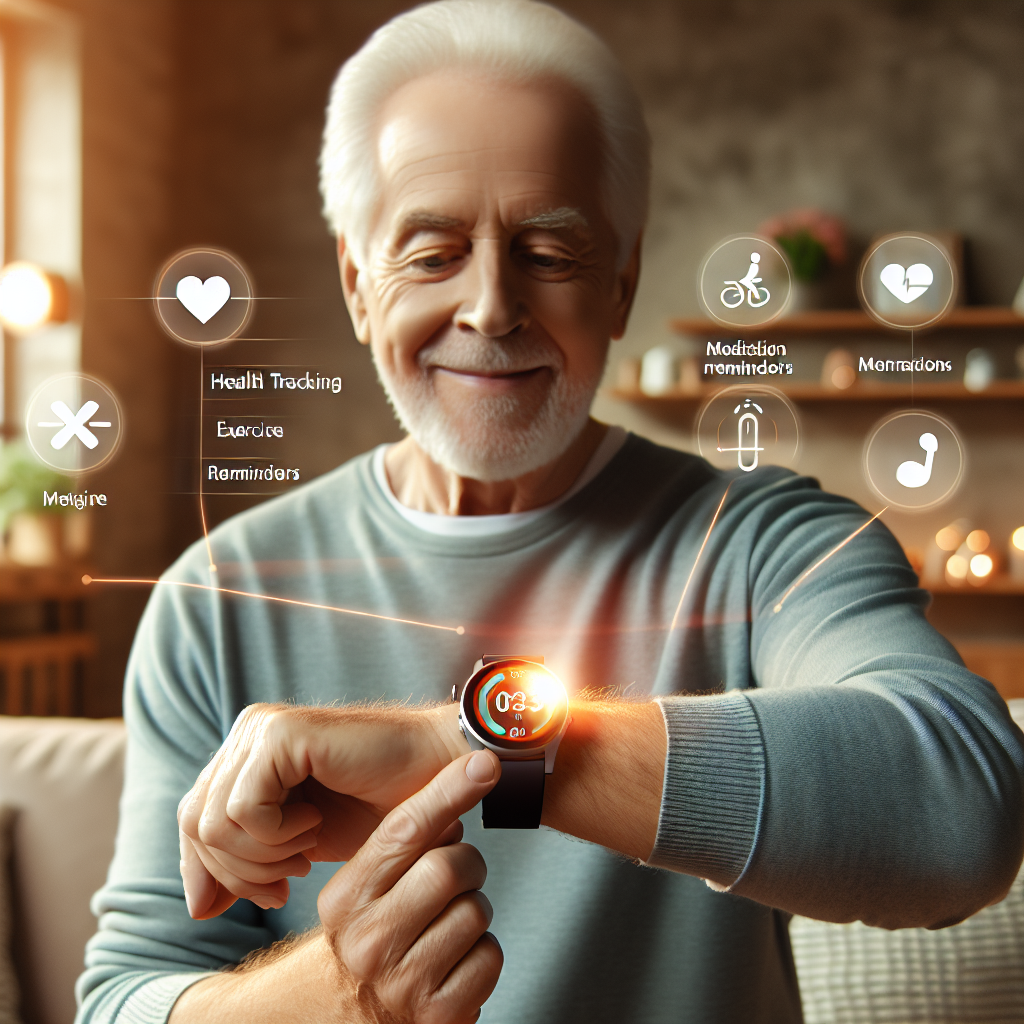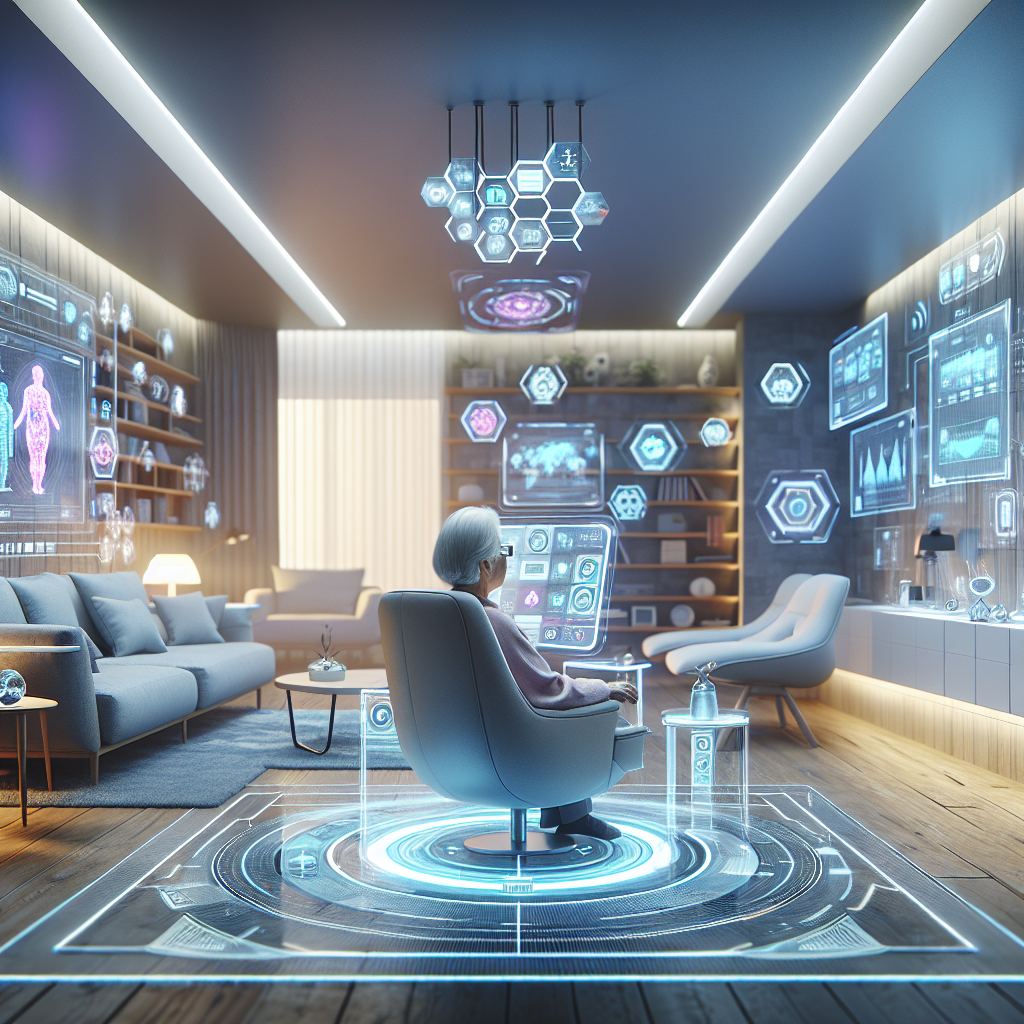Remember when the most high-tech gadget in a grandparent’s home might have been a TV remote control or a microwave? Those days are rapidly disappearing as smart technology transforms senior living spaces into hubs of innovation, independence, and enhanced quality of life. Today’s retirees are embracing technology in ways we couldn’t have imagined just a decade ago, opening doors to more connected, secure, and fulfilling golden years.
Smart home technology is no longer the domain of tech-savvy millennials—it’s becoming an essential component of senior living that’s helping older adults live more independently while staying safer than ever before. From voice-controlled assistants to sophisticated health monitoring systems, these innovations are rewriting what retirement can look like in the 21st century.
“Technology isn’t just for the young,” says Martha Johnson, an 82-year-old who recently transformed her traditional home into a smart living space. “My smart home gives me freedom I was starting to lose. I feel more independent now than I did five years ago, and that’s something I never expected at my age.”
Safeguarding Health Through Smart Technology
One of the most significant benefits of technology in senior living is the revolution in health monitoring and management. Today’s smart devices don’t just react to health emergencies—they actively help prevent them.
Wearable technology has become a game-changer for many seniors. Devices resembling ordinary watches now track vital signs, detect falls, monitor heart rhythms, and even analyze sleep patterns. These wearables provide valuable data not just to seniors themselves but to their healthcare providers and family members, creating a support network that functions even when everyone isn’t in the same room.
“My smartwatch literally saved my life,” shares Robert Wilson, 78. “It detected an irregular heartbeat I wasn’t even aware of. After showing the data to my doctor, we caught a serious heart condition before it caused a major problem.”
Medication management—a critical aspect of health maintenance for many seniors—has also been transformed through technology. Smart pill dispensers now remind users when it’s time to take medication, dispense the correct dosage, and even alert caregivers if doses are missed. With medication errors being a leading cause of health complications among seniors, these innovations provide peace of mind for everyone involved.
Emergency response systems have evolved far beyond the “I’ve fallen and can’t get up” buttons of the past. Today’s systems can detect falls automatically, distinguish between normal movements and emergencies, and connect seniors with help without requiring any action on their part. This development has been particularly meaningful for seniors living independently who worry about what might happen if they become incapacitated during an emergency.
Creating Safer, More Accessible Living Environments
Smart home technology has dramatically improved the safety and accessibility of senior living spaces. Features that might seem like luxury conveniences for younger users can be life-changing independence tools for seniors.
Voice-controlled systems like Amazon’s Alexa and Google Home allow seniors to control their environment without needing to move around or manipulate small buttons and switches. “I can turn lights on and off, adjust the thermostat, lock my doors, and even call for help—all just by speaking,” explains Dorothy Thompson, 75. “For someone with arthritis in my hands, this technology has been absolutely liberating.”
Smart lighting systems that respond to motion or voice commands eliminate the need to navigate in the dark—a major fall risk for older adults. Some systems can be programmed to gradually brighten in the morning or dim in the evening, supporting natural sleep cycles and reducing disorientation.
Home security has been revolutionized through smart technology as well. Video doorbells allow seniors to see and speak with visitors without approaching the door, smart locks eliminate fumbling with keys, and comprehensive security systems can be monitored remotely by family members or care providers. These features provide not just physical security but emotional reassurance that helps many seniors feel comfortable continuing to live independently.
Temperature control—critical for senior health and comfort—has become more sophisticated and accessible through smart thermostats. These devices learn preferences over time, adjust automatically to save energy, and can be controlled remotely. For seniors who might struggle with traditional thermostat programming or who have varying temperature needs throughout the day, these systems provide comfort without complexity.
Fostering Connection and Combating Isolation
Perhaps one of the most meaningful impacts of technology in senior living is its ability to combat social isolation—a significant health risk for older adults. Smart technology creates bridges to the outside world, keeping seniors connected to loved ones and engaged with broader communities.
Video calling, which became essential for everyone during the pandemic, has remained a vital connection tool for seniors. Simplified interfaces on tablets and smart displays have made this technology accessible even to those with limited tech experience. “I see my great-grandchildren in California every Sunday morning,” says William Davis, 86, from his home in Maine. “Before this technology, I only saw them once every few years. Now I’m watching them grow up in real-time.”
Social media platforms designed with seniors in mind have created new communities where older adults can share experiences, find support, and maintain social connections. These platforms often feature simplified interfaces, larger text, and content relevant to senior interests.
Virtual reality (VR) technology is beginning to make inroads in senior living as well, offering immersive experiences for those with limited mobility. Seniors can virtually visit destinations around the world, attend concerts, or revisit meaningful locations from their past—all from the comfort and safety of their homes.
“Last month, I ‘walked’ through my hometown in Italy—a place I haven’t been able to visit in person for twenty years,” shares Sofia Rossi, 92. “The experience brought tears to my eyes. It felt like I was really there.”
Enriching Daily Life Through Innovation
Beyond health and safety, technology in senior living is enhancing quality of life in countless ways. Smart home innovations are helping transform retirement from a time of potential decline into a period of engagement, learning, and enrichment—perfectly aligned with SilverSmart’s vision of retirement as a journey of self-discovery.
Entertainment options have expanded dramatically through streaming services with senior-friendly interfaces. Instead of being limited to whatever is on cable television, older adults now have access to vast libraries of films, shows, music, and podcasts tailored to their interests. Voice control makes navigating these options simple, even for those with limited dexterity or vision challenges.
Lifelong learning opportunities have multiplied through online courses, virtual museum tours, and interactive educational content. Many seniors are using their retirement years to pursue interests they never had time for during their working lives, from learning new languages to studying art history or exploring scientific discoveries.
Smart gardening systems allow seniors to continue enjoying the therapeutic benefits of gardening with less physical strain. Automated watering systems, raised beds controlled through apps, and monitoring tools help maintain the connection to nature that many seniors cherish without requiring difficult physical labor.
Kitchen innovations like smart appliances with safety features have made cooking easier and safer. Auto-shutoff features, temperature monitoring, and voice-controlled timers and recipes help seniors maintain independence in meal preparation—an activity closely tied to autonomy and quality of life.
Tailored Support Through Assisted Living Technology
For seniors requiring higher levels of care, technology is creating new possibilities for assistance that preserves dignity and independence. Rather than one-size-fits-all approaches, smart technology enables more personalized care that adapts to individual needs.
Remote monitoring systems allow caregivers to check in without being intrusive. Motion sensors, for example, can track routine activities and alert family members only if patterns change in concerning ways. This technology provides peace of mind for families while respecting seniors’ privacy and independence.
Smart medication management systems go beyond simple reminders, tracking patterns and potential interactions. Some systems can even notify healthcare providers about adherence issues or potential side effects, allowing for more proactive healthcare management.
Voice-activated care request systems enable seniors to call for assistance with specific needs without using emergency buttons that might feel stigmatizing. These systems can distinguish between requests for different types of help—from physical assistance to companionship—routing these requests appropriately.
“The technology in my assisted living apartment means I receive exactly the help I need, when I need it,” explains Thomas Miller, 89. “I’m not treated like someone who needs constant supervision just because I need help with certain tasks. That respect for my independence means everything.”
Enhancing Mobility and Accessibility
For many seniors, maintaining mobility is closely tied to maintaining independence and quality of life. Smart technology is creating new possibilities for navigation and movement, both inside and outside the home.
Voice-controlled motorized blinds and curtains eliminate the need to manually adjust window coverings—a task that can be challenging for those with mobility or balance issues. Smart lighting pathways can illuminate the route to bathrooms at night, significantly reducing fall risk during nighttime transitions.
GPS-enabled devices designed specifically for seniors help those with early memory challenges navigate their neighborhoods safely. These devices offer simplified directions, can be monitored by family members, and include emergency features if the user becomes disoriented.
Smart transportation options have expanded mobility horizons for seniors who no longer drive. Ride-sharing apps with simplified interfaces designed for older adults have made it easier to maintain independence in transportation without having to navigate public transit systems that might be physically challenging.
“I gave up driving two years ago and thought my independent life was over,” says Eleanor Rodriguez, 79. “Now I use a senior-friendly ride service through my tablet. I still go to my book club, my doctor’s appointments, and shopping—all on my own schedule. Technology gave me back my freedom.”
Transforming the Retirement Experience
As we’ve seen throughout this exploration, technology in senior living is doing far more than adding convenient features to homes—it’s fundamentally transforming the retirement experience. The integration of smart home technology with senior-centered design is creating environments where aging becomes less about limitation and more about new possibilities.
This transformation aligns perfectly with SilverSmart’s philosophy that retirement represents a unique opportunity for self-discovery and personal fulfillment. With the practical challenges of aging addressed through thoughtful technology, seniors can focus more energy on pursuing passions, developing new skills, and continuing to contribute meaningfully to their communities.
The seniors embracing these technologies are pioneering a new vision of retirement—one where accumulated wisdom combines with technological empowerment to create unlimited possibilities for growth and engagement. They’re demonstrating that the golden years can truly be a time of freedom, creativity, and continued purpose.
As smart home technology continues to evolve with seniors’ needs in mind, we can expect even more innovative solutions that enhance independence, safety, connection, and fulfillment. The future of senior living isn’t just about adding years to life—it’s about adding life to years through thoughtful integration of technology that supports each individual’s journey of self-discovery.
For today’s seniors and those approaching retirement, these technological advances offer an exciting promise: the golden years can be a time of unprecedented freedom and possibility, where each day brings new opportunities to learn, connect, and thrive. Technology in senior living isn’t just smart—it’s transformative.

